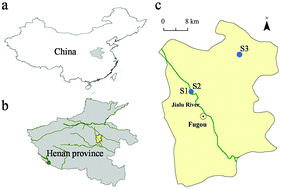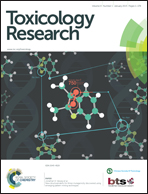Application of human cell transformation assay on assessment of carcinogenic potential of river organic pollutants
Abstract
Approaches for assessing the carcinogenic potential of complex mixtures of environmental pollutants are still under development. In this study, a human cell transformation assay was used to evaluate the carcinogenic potential of organic extracts of water pollutants collected from the Jialu River (S1), one of the main tributaries of the Huaihe River in Henan province, China. The incidence of digestive cancers in the basin has risen dramatically within the past three decades. In addition, we collected water samples from the local wells in two liver cancer patients’ homes. The distance of these two wells is 1 km (S2) and 20 km (S3) from the site of S1. Organic chemicals were extracted using hydrophilic–lipophilic balance solid phase cartridges and the fraction was dissolved in DMSO. Human hepatic immortal cells (HL-7702) were treated with each extract and the cytotoxicity was measured. The cells were treated with each extract and the efficiency of cell transformation was examined periodically. The subcutaneous injection of treated cells in immune-deficient mice was performed to confirm the malignant cell transformation. The latency of malignant transformation for samples S1, S2, and S3 was 14, 14, and 16 weeks, respectively, at lowest concentrations of 1.0, 0.5, and 2.0 microlitres (μL) of extract per millilitre medium (mL), enriched from 10, 50, and 200 mL source water, respectively. Moreover, we analyzed the organic extracts for 16 polycyclic aromatic hydrocarbons (PAHs) using GC-MS analysis and found 13 components appearing in all water samples. Our study indicates that human cell transformation assays can potentially be used for assessing the carcinogenic potential of mixtures of environmental pollutants.


 Please wait while we load your content...
Please wait while we load your content...